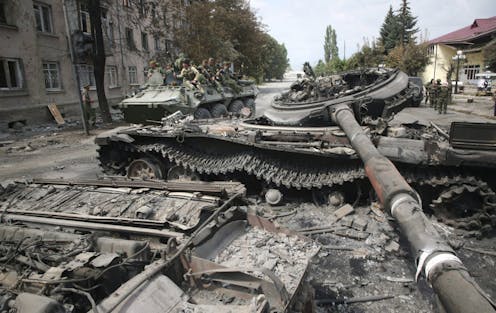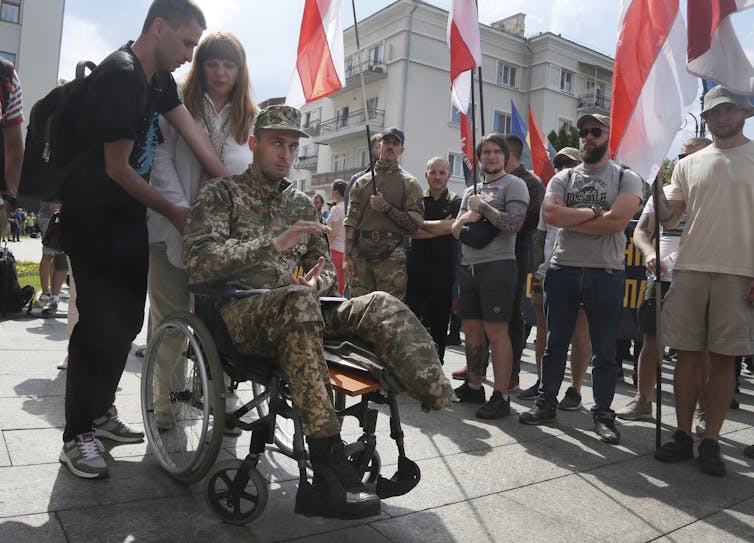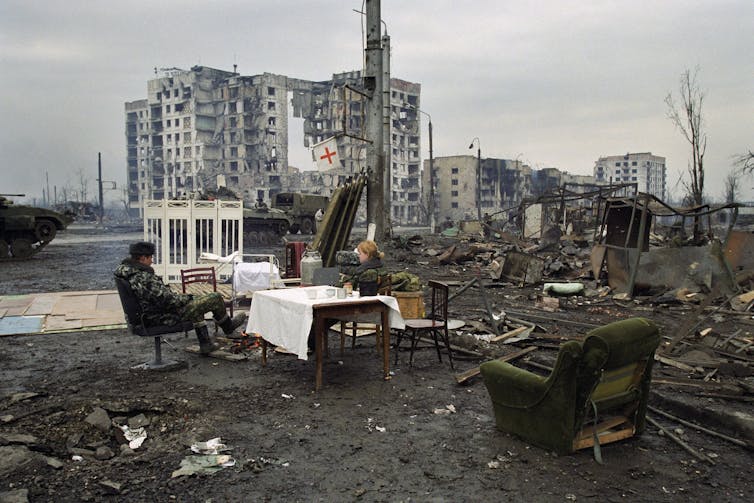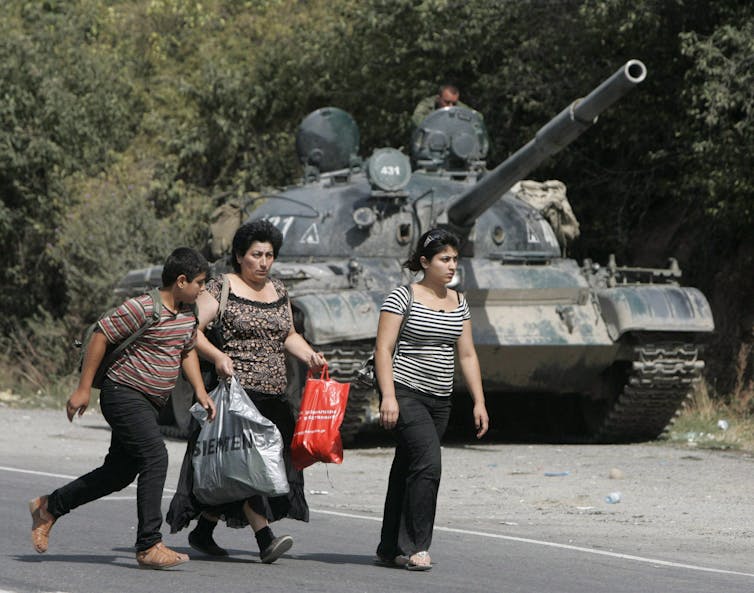
In the midst of the Russian invasion of Ukraine, it’s worth examining the evolution of Russia’s official rhetoric and military actions in former Soviet states since the breakup of the Soviet Union in 1991.
In the 1990s, soon after the Soviet Union’s collapse, Russia’s military became involved in the first generation of separatist wars in Georgia (Abkhazia and South Ossetia) and Moldova (Transdniestria) in former Soviet territory.
My research showed the initial involvement in those separatist wars was taken independently by the Russian military. Later, Russia became officially involved.

Mercenaries across the former Soviet Union joined the fighting. Eventually, Russia was able to bring opposing sides to ceasefires and the negotiating table. The political status quo was enforced by mostly Russian “peacekeepers,” soldiers who had fought in the war.
The Russian government portrayed its response to these mostly local grievances as successfully bringing stability to volatile situations. Its official rhetoric, similar to its justifications for involvement in the Tajikistani civil war from 1992 to 1997, was that it was pursuing pragmatic economic and security interests and protecting its Russian diaspora, even it if was very small.
Read more: After 25 years of independence, Tajikistan is a bastion of torture and repression
The Russian state also portrayed Russia as the only country that could bring peace to the chaos that existed in the security vacuum that emerged with the breakup of the Soviet Union.
In the end, through its support of Abkhazian and Transdniestrian separatists and then its endorsement of the Georgian and Moldovan central governments, Russia ensured the legitimacy of the newly independent states while bringing them to heel. Friendship agreements were struck, military bases retained and the hesitation of countries to join the Commonwealth of Independent States, formed by Russia in 1991, disappeared.
Open debates about military action
I was in Moscow in the mid to late 1990s, interviewing Russian politicians and military elite and writing my PhD on Russian debates about military involvement in the former Soviet space. What struck me then was the openness of the debate over foreign policy options.
One could discern different options, pursued by different government departments — including the Ministry of Defence versus the Ministry of Foreign Affairs — and within the political elite. The public, the media and the parliament also participated in a vigorous debate over a range of possible actions. Diverse foreign policy ideas were expressed based upon different interpretations of Russia’s identity.
These ranged from idealistic liberal westernist ideas — for example, Russia should develop closer relations to the West, or adopt western economic or political models — to what scholars then termed pragmatic nationalist ideas that argued Russia should carefully redevelop some ties with former Soviet states and abandon others.
There were also more extreme fundamentalist nationalist ideas that included xenophobic isolationism and imperialist arguments for recreating parts of the Soviet Union or the czarist Russian Empire.
Today, Russia has launched what may be termed its third wave of military involvement in the former Soviet region. This is an inhumane and planned military assault against most of Ukraine and all Ukrainians.
In many ways, it’s more like Russia’s brutal and indiscriminate actions inside its official borders in Chechnya in the late 1990s, and outside its borders in Syria after 2015. No one can legitimately argue the invasion of Ukraine is designed to bring stability to former Soviet territory.

A move towards more extreme ideas
Since the 1990s, Russia’s official rhetoric and justifications have also evolved. In a much more tightly controlled and authoritarian regime under Vladimir Putin, the official language is less based on pragmatic or realist ideas (such as how develop closer ties to some neighbouring states) and incorporates more extreme nationalist and imperialist ideas.
During the second generation of Russian wars, in Georgia in 2008 and in Crimea, Luhansk and Donetsk in 2014, the regime’s narrative addressed increasingly manufactured historical and ethnic injustices. Added to this were perceived geopolitical grievances, including NATO and European Union expansion and American and western involvement in “colour revolutions” on its borders.

More recently, culminating in Putin’s speeches in February 2022, the president has presented an angrier and more delusional version of these narratives. He infamously spoke of genocide in the Donbas and the need to remove the fascist regime and “denazify” Ukraine.
Read more: Vladimir Putin points to history to justify his Ukraine invasion, regardless of reality
Putin now portrays Ukraine as an illegitimate nation, and a west-leaning Ukrainian government (with ties to NATO) as an illegitimate regime.
Compared to the 1990s, there is almost no foreign policy debate in Russia’s traditional media or parliament. Russians are being silenced, and opposing views about Russia’s military involvement portrayed by the state are deemed unacceptable. Many social media platforms are shut down, and on the streets, protesters are being arrested.
There is real danger in presenting simplistic analyses of complex wars, especially in the middle of them. But the world would be wise in examining and taking seriously the evolving role of ideas, perceptions and domestic politics alongside geopolitics in wars like the one ongoing in Ukraine.
Nicole Jackson does not work for, consult, own shares in or receive funding from any company or organisation that would benefit from this article, and has disclosed no relevant affiliations beyond their academic appointment.
This article was originally published on The Conversation. Read the original article.







